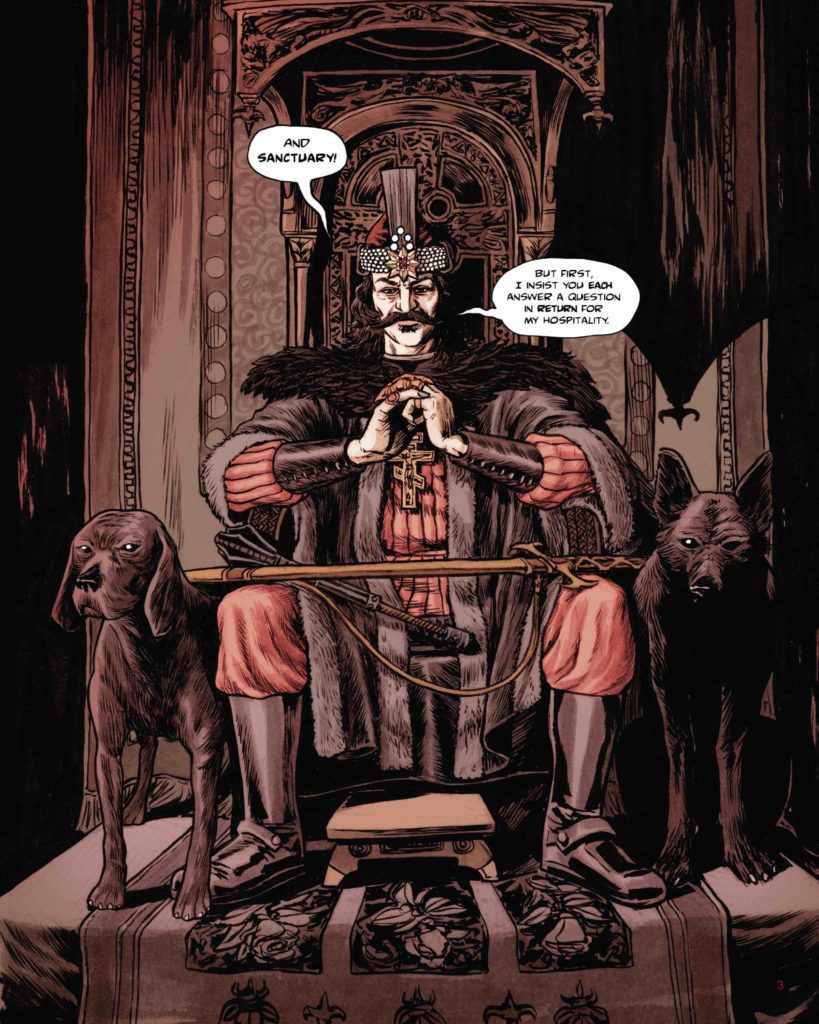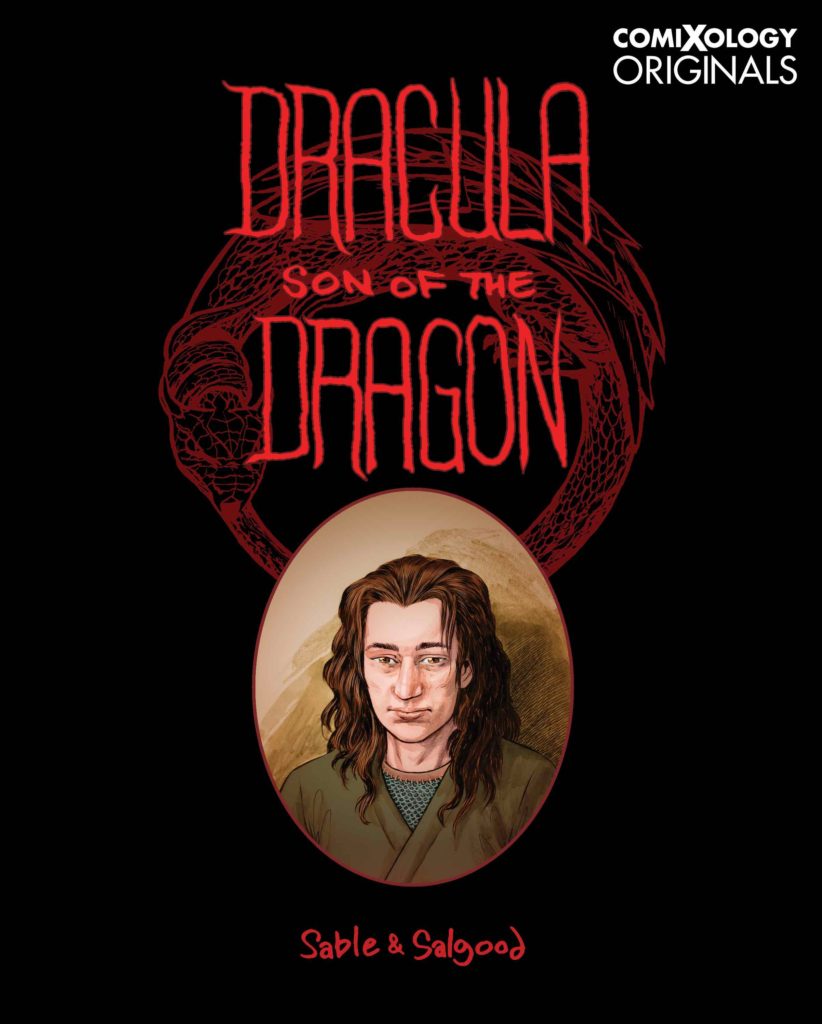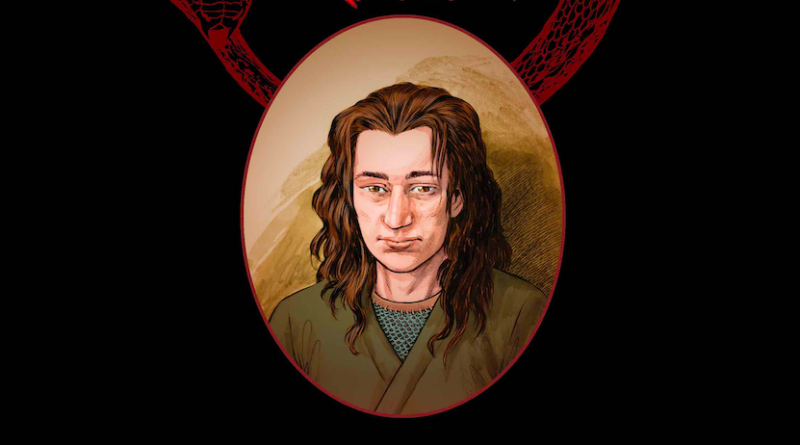INTERVIEW: Vlad the Impaler takes bite out of new Dracula graphic novel
Image courtesy of comiXology / Provided with permission.
There may be no character more popular in the horror genre than Dracula, the vampire who sucks blood, is afraid of garlic and keeps house in a tucked-away Transylvanian castle. What readers of Bram Stoker’s original novel or viewers of the Bela Lugosi films might not realize is that the Dracula tale, although certainly far-fetched, is actually based on a real person: Vlad the Impaler.
A new graphic novel from comiXology, the Amazon-associated digital comic service, centers on the real Vlad Tepes, also known as Vlad the Impaler or Vlad Drucul, according to press notes. He ruled in the 15th century and, at least in this graphic novel, kills in order to serve the Holy Roman Order of The Dragon, a secret society that also enrolled Vlad’s father as a member.
The publication, called Dracula: Son of the Dragon, comes courtesy of writer Mark Sable and artist Max Douglas (Salgood Sam). ComiXology is billing the graphic novel as part historical fiction, part horror fantasy and part blood-soaked epic.
Recently Hollywood Soapbox exchanged emails with Sable and Sam about Dracula: Son of the Dragon. Sable’s previous credits include The Dark, Cyborg and Duplicate. Sam’s previous credits include A Bastards Tale, We Became Someone and Pin City. Questions and answers have been slightly edited for style.

How much research did you conduct into Vlad the Impaler?
Sable: When you are dealing with a historical figure, especially one as infamous as Vlad the Impaler, I think you owe it to your readers to make sure the book is as well-researched. And when you are injecting elements of supernatural horror, as we do with Dracula: Son of the Dragon, it’s important to ground the fantastical in reality.
Towards the back of the book, there’s a partial bibliography where I list 18 of the books and films I looked to for research or inspiration, and that’s just the tip of the iceberg. In addition, Salgood did his own research, compiling a ‘morgue’ of images he used for reference.
So we both did a pretty deep dive into Vlad, Bram Stoker’s Dracula, the history of Eastern Europe during Dracula’s reign, vampire folklore etc.
Sam: A lot! That’s often fun stuff for me. Building on the substantial material Mark sent me, I did as much visual research as I could and amassed a style bible to work with that was 100+ pages thick. A great deal of that worked its way onto the pages in some way. Props locations and costuming, architecture, animals. I had to draw a lot of horses man!
Most was period related, but it included all the things I could find depicting the historical Vlad and his family. In contributing to the script I ended up looking up and adding a few things to that as well. He’s a bit mysterious though; I don’t think there’s enough known to be able to tell any story about him without filling in blanks.
Ultimately we were working on a fictional story, so that’s cool. It’s an aspect of comics I enjoy, world building and reference hunting. So we took liberties, but I think the effort lends a richer texture and depth to the work.
Have you always been fascinated by the Vlad/Dracula tale?
Sable: Some of my earliest, fondest memories have to do with watching first Bela Lugosi and then Christopher Lee as Dracula with my father growing up. Then I graduated to Bram Stoker’s novel, which was even more terrifying. At the same time, I was captivated when I learned that the fictional Count Dracula had his roots in a historical figure by watching Leonard Nimoy’s old documentary series In Search Of. Since then I’ve been obsessed with finally telling the story of how the historical Impaler became a vampire.
Sam: Vampires generally are classic characters I’ve always enjoyed. I can’t really remember when I first saw them in films. I was very young I think, and I think one of the Hammer films was the first — and lots of others over the years. And I loved reading the old Tomb of Dracula comics in the ’70s.
So many adaptations of Vlad/Dracula have come out. How did you set yours apart?
Sable: While there are many versions of Dracula, nothing I’ve read goes into detail like Dracula: Son of the Dragon about how Vlad becomes a vampire. And certainly not in a way that organically connects to both Bram Stoker’s novel and the historical record.
The key to me was reading about the Scholamance in the novel. It’s only mentioned briefly by Stoker, but it’s where Dracula learned the dark arts. And there are real legends in what is now Romania about such a school, where Satan himself is said to take the soul of certain scholars.
Without spoiling anything, the Scholamance is part of the key to Vlad’s transformation into a vampire. I think of it as kind of a dark mirror to Hogwarts — what if Harry Potter had been tutored by the Devil instead of Dumbledore? In our graphic novel, it’s also the place where the members of the very real secret society the Order of the Dragons send their sons to be educated. They are European, and so it sets up Game of Thrones-type intrigue that reverberates across the late Medieval and early Renaissance world.
Of course, it should go without saying that Salgood Sam’s art is what truly sets the book apart. Yes, he can draw horror undead beings and epic battles, but his true gift is bringing incredible humanity to the characters. The characters at the heart of Dracula: Son of the Dragon — Vlad, his brothers, his rival the future Sultan etc. — are shaped by a violent, intolerant world. Through Salgood’s illustration [you] come to care for them not only as warriors or warlocks, but as human beings who are capable of love and loss.
Sam: I don’t think any have really spent this kind of time exploring this part of his life? Mark can probably say better, but that struck me as novel.

How much is fiction? How much is history?
Sable: I’d say it’s about 75% history, 25% fiction. We try to adhere to both real historical timeline and what Bram Stoker mentions in his novel about Count Dracula’s origins. I’m really proud of the fictional work we did, but I also feel like the history we depict shows things that haven’t been shown in comics before. The formation of the Order of the Dragon, the massive battle of Varna, the secret scandals of the court of the Ottoman Empire … those should read as fresh as any of the supernatural horror.
Sam: Oh, mostly fiction? Vampires aren’t real you know 😉
Why do you think the myth of vampires continues to be so popular?
Sable: I think vampire myths endure because they can be metaphors for so many things — sex, disease, power fantasies — often all at once. In Dracula: Son of the Dragon, vampire blood is the source of a plague, a Medieval biological weapon and the source of conflict between East and West, Christianity and Islam. Although it’s great for fiction, sadly the world hasn’t changed that much in 600 years.
And that doesn’t even touch on why Dracula is so obsessed with immortality in our book. He fears that because of the horrible things he’s done, he’s going to hell. What better way to escape hell than through living forever as one of the undead?
Sam: Paraphilias? And sex? We didn’t get into the latter much due to the age of the main characters, but those are there. And in ours, it’s a story about family and betrayal I think.
By John Soltes / Publisher / John@HollywoodSoapbox.com
Dracula: Son of the Dragon, written by Mark Sable and art by Salgood Sam, is now available from comiXology. Click here for more information.

